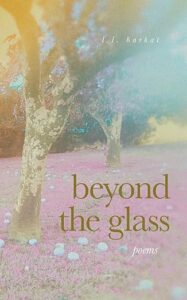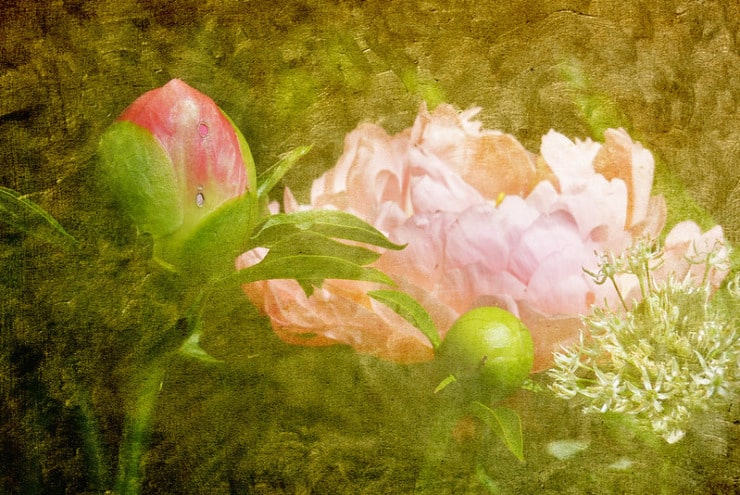L.L. Barkat breaks a seven-year drought with a new poetry collection
She may be identified with poetry, but the very first work by L.L. Barkat that I read was Stone Crossings: Finding Grace in Hard and Hidden Places (2008). I know exactly where I was and what I was doing when I read it. In July 2009, I’d crashed during a weekend biking trip with a group. I felt banged up but thought I was okay.
Until three days later, when I discovered (at work) that I was having trouble breathing. My wife whisked me off to the hospital emergency room. Anticipating a long wait until they checked me out and sent me home, I grabbed Stone Crossings to keep me occupied. I ended up staying overnight; I had four broken ribs and a partially collapsed lung.
Still in my street clothes, I was put in a regular patient’s room, an oxygen mask fitted over my face. Sleep was impossible, so I read. The book is non-fiction, but I knew back in 2009 it was written by a poet. I read it straight through that night, and then I started rereading it. And it was more than helpful in finding grace in a hard place.
The inspiration for poems and the creation can come from a thousand different sources and directions. Yet with all the books of poetry I’ve read, I never read a single work that originated in a lack of inspiration. Until now.
With Beyond the Glass: Poems, Barkat didn’t simply publish a poetry collection. She wrote what finally broke her writer’s block, the block she’d been experiencing for seven years. The flow had ebbed and then stopped altogether. For a writer, that is beyond borderline catastrophic. “The writing evaporated,” she says. “What an empty landscape it has been.”
When The Write to Poetry offered a 30-day challenge for National Poetry Month in April, Barkat decided to participate. For 30 days, she wrote 30 poems (31, if you include an introductory poem). It wasn’t easy; she pushed herself, even when she felt exhausted and discouraged. But she went the course and accomplished what she set out to do—use prompts to write 30 poems in 30 days.
Few understand poetry like Barkat does. The collection’s title speaks to what poetry is about, how it’s practiced, and even to her own writing block. Poets, and writers generally, write through a separation from what’s there. Sometimes we can see it clearly—like looking through a pane of glass. Sometimes that glass separates us, working as a barrier. We can see, but we can’t experience.
The prompts that framed Beyond the Glass were varied and generally unrelated. A bird outside your window. Your first memory. Collecting something. Discarding something. Your closet. An old photo. The prompts had no running theme; each handed the poet something different to write each day.
The prompt for this poem was “write a poem about reading poems.”
The Big Red Heart Box

I can’t wait to taste, so
I take a bite of too many
But then, who makes
the rules here, anyway?
A poem is a chocolate
(That’s my rule)
Each page in a collection—
is an invitation
to taste as many as I like
in a single night
That strawberry
that caramel
that dark art
It doesn’t matter
where I end
(Or where
I start)
She’s not a minimalist writer, but Barkat uses words sparingly and with targeted precision. The poems read so easily that you can sometimes fall into the trap of reading them too quickly. I can hear her advising me to read slowly, perhaps while drinking tea and eating a small piece of dark chocolate. “Savor the words in sips and small bites,” she’d say. (I did this while reading some of the poems, and it works; you do slow down.)
Barkat has previously published several poetry collections, including InsideOut; Love, Etc.: Poems of love, laughter, longing & loss; and Earth to Poetry. She’s also the co-editor of How to Write a Form Poem and the author of Rumors of Water: Thoughts on Creativity & Writing; God in the Yard: Spiritual Practice for the Rest of Us; The Golden Dress: A Fairy Tale; A is for Azure: The Alphabet in Colors; Inspired!: 8 ways to write poems you can love; The Novelist (a novella); Stone Crossings: Finding Grace in Hard and Hidden Places; and two books in the Molly and Joe Want to Know series. Her poetry has been published at the BBC, NPR, VQR, and The Best American Poetry.
Beyond the Glass lists the complete set of writing prompts as an appendix; you can match the prompt to the poem to see how Barkat interpreted it. And somewhere in that process, the block was broken. It didn’t happen like a dam bursting, followed by a massive outpouring of pent-up words. Instead, it’s more like Barkat opened a window, allowing her (and you) to move beyond the glass.
Photo by Neil Kenrick, Creative Commons, via Flickr. Post by Glynn Young.
How to Read a Poem uses images like the mouse, the hive, the switch (from the Billy Collins poem)—to guide readers into new ways of understanding poems. Anthology included.
“I require all our incoming poetry students—in the MFA I direct—to buy and read this book.”
—Jeanetta Calhoun Mish
- “Your Accent! You Can’t Be from New Orleans!” - October 9, 2025
- Poets and Poems: Donna Vorreyer and “Unrivered” - October 7, 2025
- Poet Sidney Lanier and the Lost Cause - October 2, 2025


L.L. Barkat says
Glynn, thank you so much for this wonderful reading of Beyond the Glass. I’m especially enamored of your discussion about the title. (The title continues to make even *me* ponder— unfolding more insights as it goes. 🙂 )
Donna Hilbert says
What a wonderful, thoughtful review. Amazon has promised my copy will arrive today. I can’t wait.